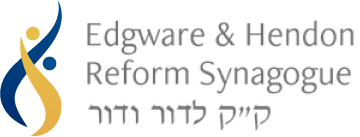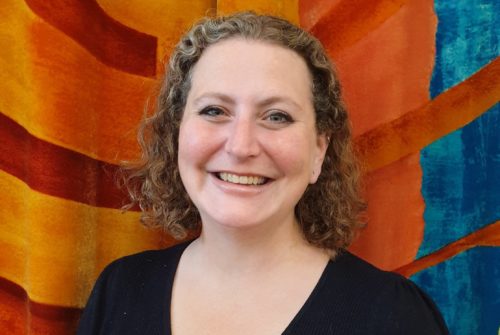How do we work out on which Shabbat a Bar or Bat Mitzvah is going to take place? We begin by finding the young person’s Hebrew birthdate in the year in which they were born and then correspond that to their 13th year in the Jewish dating system. Their Bar Mitzvah can then be any date from the next Shabbat after their birthday.
The date of the Bar or Bat Mitzvah determines the Torah portion as we read through the Torah sequentially from end to end, week by week, starting from Genesis at Simchat Torah. There is no such thing as a “good” Torah portion – with the skills of the people who teach at EHRS every sedra in the Torah provides food for thought, plentiful room for interpretation and requires the same level of skill to deliver.
But there is no doubt that on the face of it, there is a ranking of Torah portions in terms of their popularity as Barmitzvah portions – the premier league are the Genesis stories which are so easy to relate to as we all grow up with them – one of those will be your Bar Mitzvah portion if you were born between say October and the end of December. Next the Moses stories – plagues and the Golden calf and such like – yours if your Barmitzvah is in January or early February. Then the big statements like the two Ten Commandments portions and the Deuteronomy portion containing the Shema – which is like getting 6 verses as a gift because you will have read them so many times. As we reach the third division of popularity we have the unfamiliar but actually rather fun stories of Korach, Balaam and the spies – all available in May/June. Towards the bottom of this imaginary ranking are the description of the sanctuary portions, then the lists of sacrifices and the blessings and curses portions with no action in them. At the very bottom of the pile of popularity is this week’s portion Tazria – the one about leprosy, dry rot and the blood of childbirth. It’s kind of tough to make this come alive for a young person of 12!
“Tazria” and “Metzora” (next week) are among the most challenging Torah portions we read. After describing the process by which the priests helped women regain a state of “ritual purity” after childbirth, “Tazria goes on to describe the priests’ role in diagnosing and (where possible) ritually purifying those who suffered from a skin disease described as “tzara’at.” According to this portion, the disease also affected fabrics and houses which needed to be purified as a result.
Most modern scholars agree that the identification of “tzara’at” with Hansen’s disease (i.e., “leprosy”) is unlikely. Rather, “tzara’at” is likely to describe a complex collection of ailments which shared some common features. At times, the disease was transient and the person was permitted, after appropriate ritual purification, to return to the community. At other times, the disease was permanent and the person was banished from the community.
As Rabbi Jonathan Kraus writes: There are many important topics in “Tazria”–most of them uncomfortable for Reform Jews: the presumed “impurity” of women after childbirth (especially since that impurity lasted longer after giving birth to a daughter!), the tendency to banish people whose disease threatens and scares the community. In addition, the question of which human experiences create a sense of “impurity” and what we can learn from our human need to regain a sense of “purity.”
But Tazria is equally important as all other portions because it has much to teach us. Tazria is a challenge to examine who we place “out of bounds” in our society because they are perceived as some kind of threat. Tazria challenges us to be like the priests–accepting the responsibility to go out and see these people, examine and understand their experience, look for some way to bring them back in. Tazria challenges us not to turn away in our fear and vulnerability–not to let our fear or anger motivate us to push such people out, washing our hands of any sense of connectedness or responsibility. And, because there ARE tragic times when danger to the community legitimately requires banishment or isolation, Tazria also challenges us to open ourselves to the grief that should accompany such a terrible necessity.
Unfortunately, at this moment, there are many such relationships to examine: the inmates in our crowded prisons, refugees in Britain and elsewhere in the world, immigrants, both legal and illegal, who are being increasingly marginalized, the poor, the disabled, the elderly housebound and others. If we are truly to be “mamlechet kohanim”–a kingdom of priests–we have no right to harden our hearts or turn away.
Our ancestors understood the need for isolation and quarantine in the case of contagious diseases. While the Torah provides for such precautions, it never completely isolated the individual who suffered from this condition. Just the opposite: the person most respected in the community, the Kohen, was called upon to examine the afflicted person’s sores and to diagnose his disease. It was his job to get his hands dirty. And when the person was finally cured of Tzara’at, the Kohen again came forward to bring the patient back into the tabernacle and the presence of God with offerings and immersions. In this way the stigma of his illness would not remain with the person. If the Kohen, who was called on to live by the highest standards of purity could be in the presence of the patient and even touch him then surely others could do so as well.
Rabbi Mark Greenspan notes that the priest here was not a doctor. The Kohen was called on not to cure the Metzorah, the person with lets call it leprosy, but to heal him. His job was to establish the person’s relationship with God and with the community during his illness and after as well. Cure was in the hands of God and the medics. Healing was a matter of wholeness and holiness. It had more to do with confronting the crisis when it began and overcoming the stigma of illness when it ended.
I’d like to suggest that this is the purpose of the Mi Sheberakh which we recite each Shabbat morning as well – the prayer for the sick which I often use just after we have read from the Torah. It is not about cure but about healing and wholeness.
If you think about it, the prayers for the sick don’t really make much of a difference. Many is the time when we have recited this prayer and praised God “rofeh ha holim” one week and the next week been mentioning the same person in the Kaddish as their body did not make it through. There is nothing magical about the prayers for the sick. If there was Rabbis would be richer than medical consultants and the shul would be filled to capacity all the time
The prayers for the sick can not cure; they can only offer healing. First, it brings the ill person to our attention and it makes him or her a part of our community at a time when he’s feeling most isolated and alone. There is something about telling people that we’re reciting a prayer for them in synagogue that is comforting and that gives them strength. Others are thinking of them and devoting time to them in a sacred place.
Second, the prayers for the sick are a call to action. When we hear the name of the person who is ill we are called upon to fulfil the Mitzvah of Bikkur Cholim, visiting the sick. The names of those who are ill should not be heard mindlessly. We need to listen attentively to each and every name that is being said.
Third, while the Prayers for the sick cannot cure cancer or heal a sick heart, they can give a person a sense of hope, they can help us see the blessings of the present moment, they can encourage us to seek reconciliation with our loved ones and they can help us renew our relationship with God. Even someone suffering from a terminal illness needs a Mi Sheberakh – we pray that they will be able to close up the loose ends in their lives, make peace with death and say farewell to their loved ones. That is what we mean by healing.
Finally, like the Kohen who treats the Metzorah, the Prayers for the sick remind us that even those who are contagious and quarantined are not beyond God’s concern and compassion. That is the symbolism of the Kohen who diagnoses and oversees the treatment of the leper. His presence is a reminder of God’s deep concern for all his children.
Too often we treat the Prayers for the sick much too lightly perhaps because we think – how can that help. I’d like to suggest that, when we recite this prayer we need to pay extra close attention. Not only is God listening but we hope that our neighbours are paying attention to our prayers as well. Someone sitting near us has spoken a name during Prayers for the sick because they are worried and concerned. Have we noticed?
So much of our prayers are impersonal. We pray as a “WE” rather than as a “ME.” And while this creates a strong sense of community a community is made up of separate individuals. The Prayers for the sick are a reminder that there are people who need our prayers of healing and that each individual is precious in the eyes of God – even one afflicted with the worst of illness. It is a deeply personal moment that others share with us – we need to respect them and share their pain.
The sages tell us that one who visits the sick takes away one sixtieth of the person’s illness. Maybe this is the ultimate purpose of the Prayers for the sick as well as the Kohen’s treatment of Tzara’at: to lessen a person’s suffering by sharing it with them no matter how unpleasant it may be.
So too we need to read and hear the Sedra Tazria – Judaism cannot be only lovely stories and straightforward ethics, Judaism challenges us – we can learn from the unpleasant as much as from the pretty.



